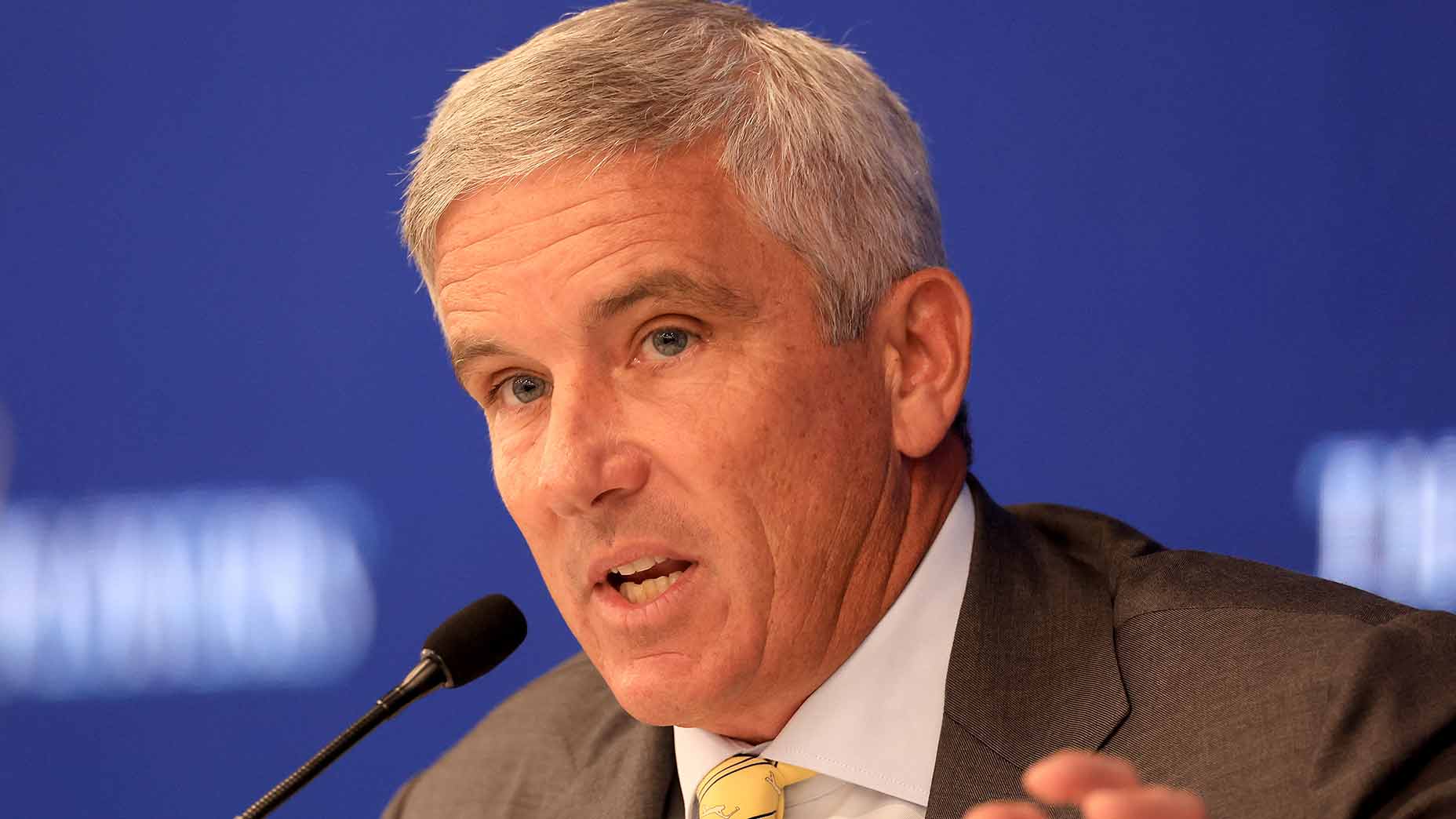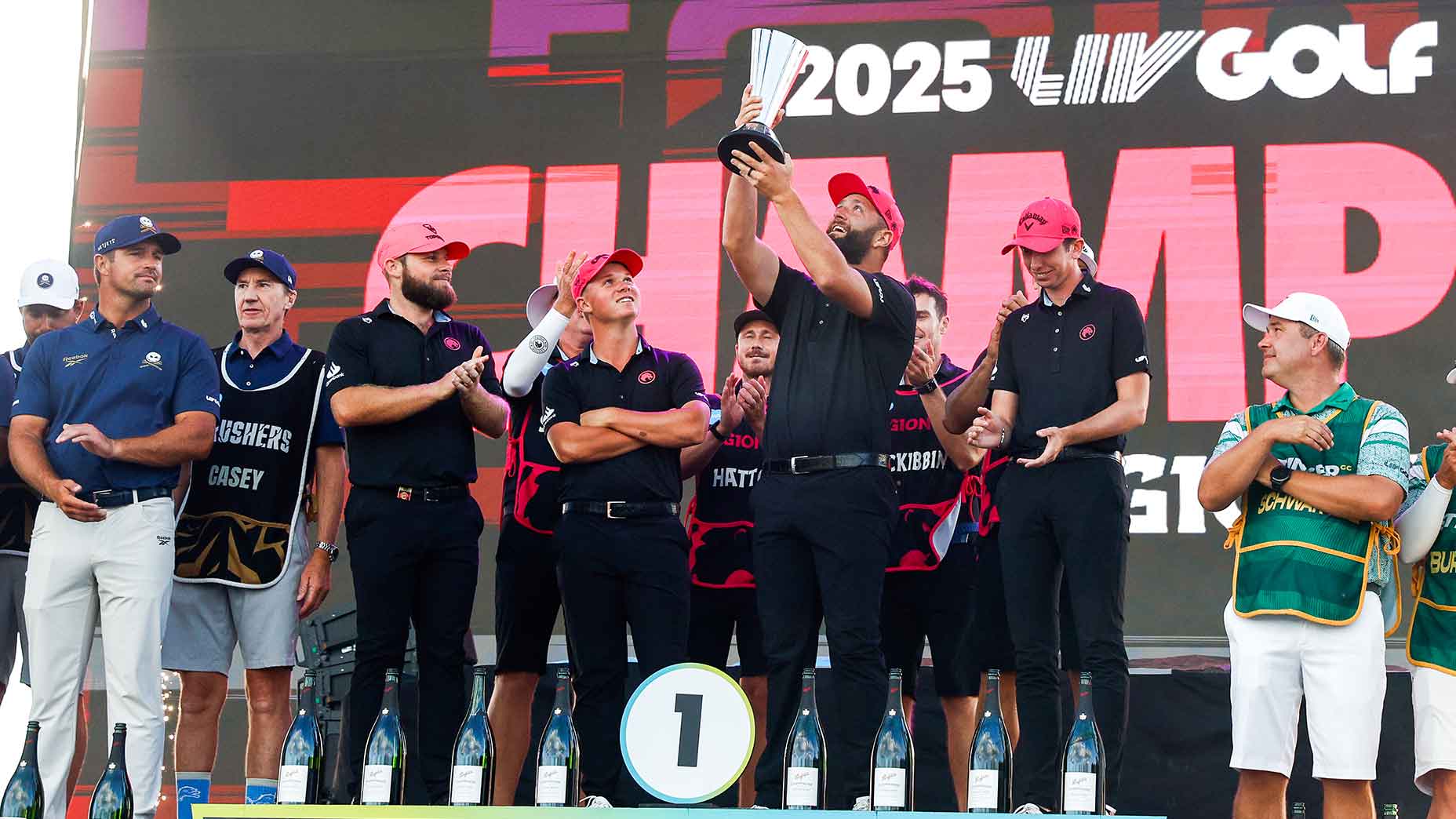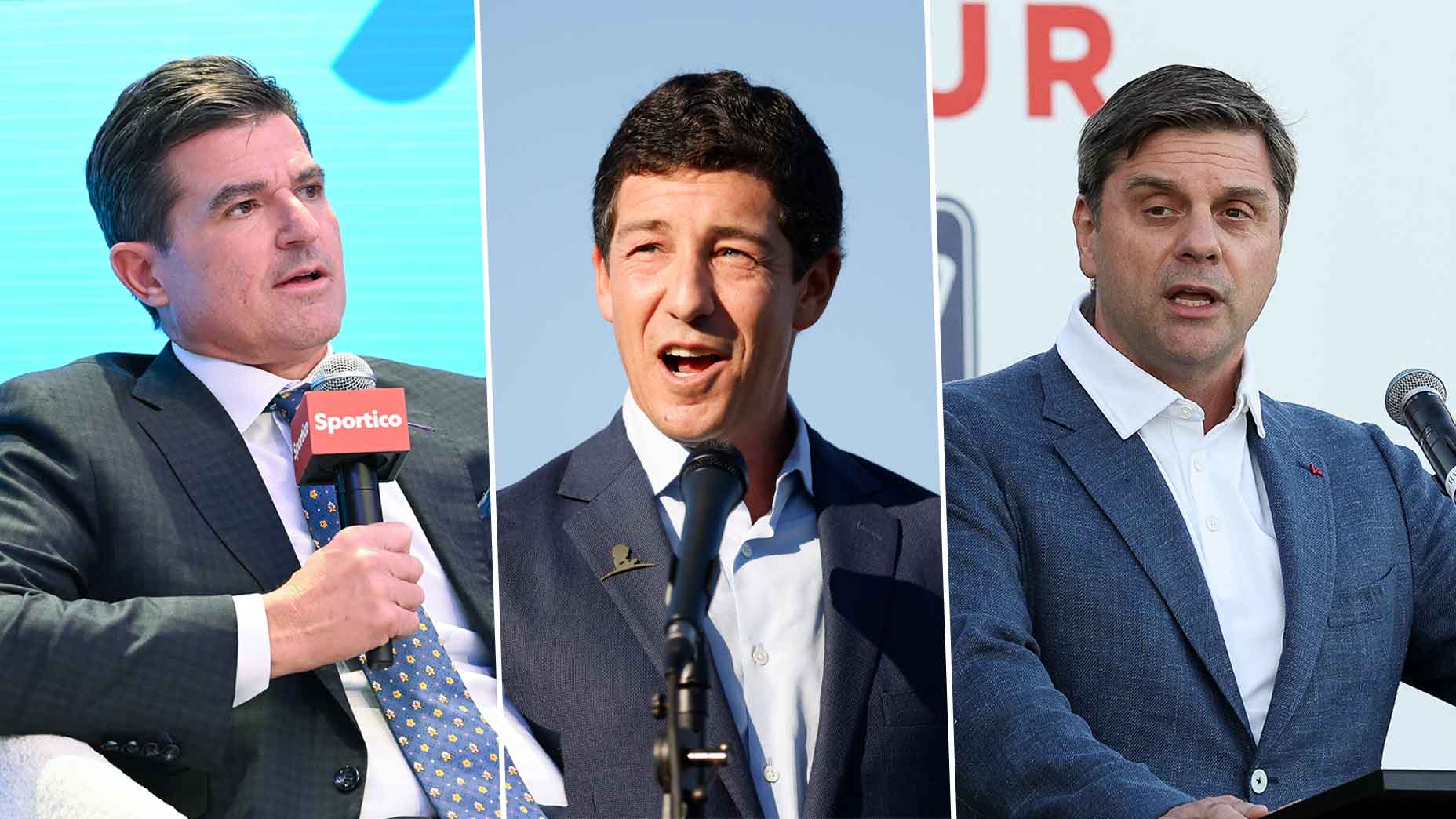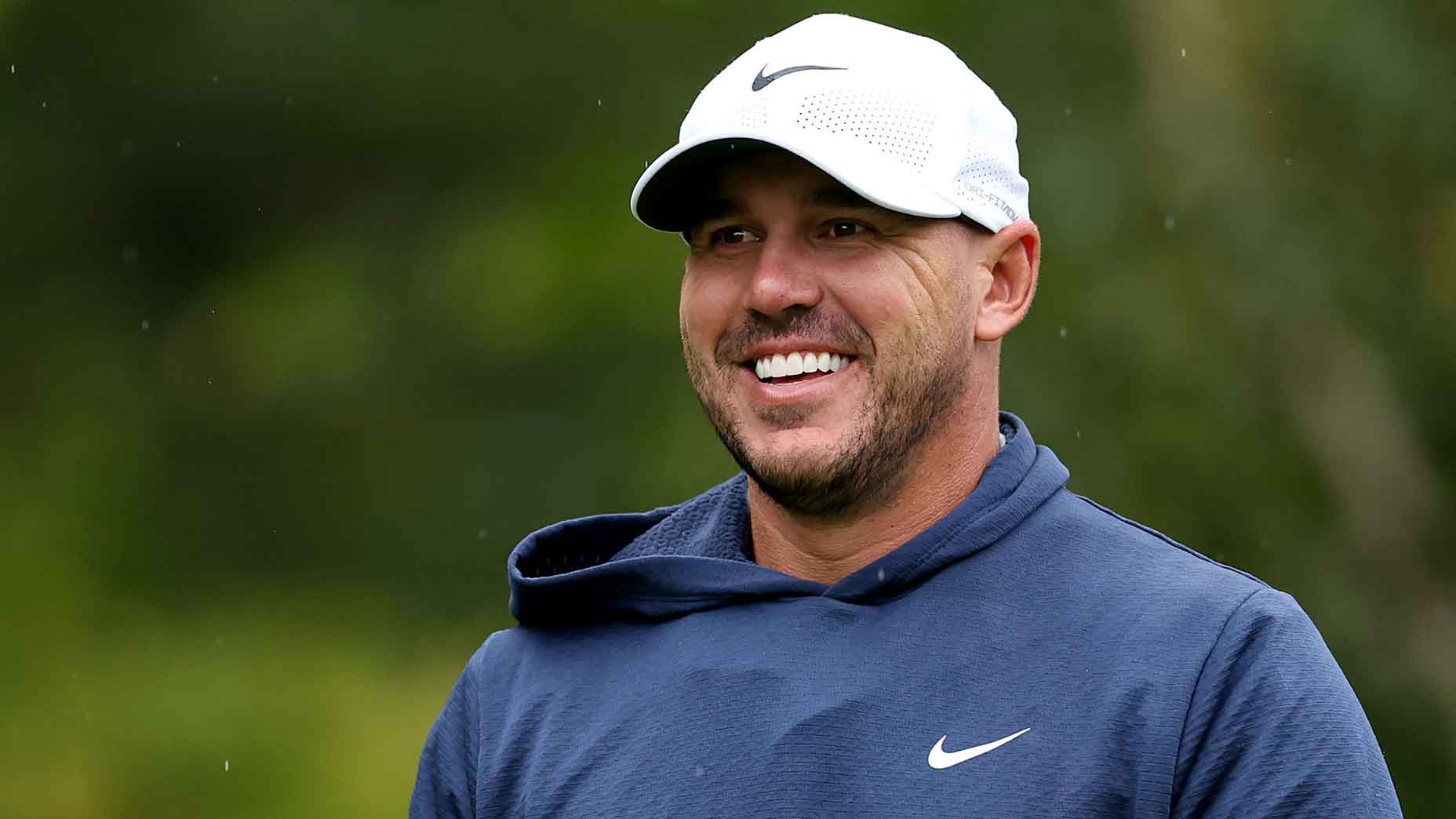Well, that was shocking.
On Tuesday morning, the PGA Tour and Saudi Public Investment Fund merged, effectively putting an end to the conflict that has dominated the sport for the better part of the last 18 months. The news that the Tour and PIF would form a new “commercial entity to unify golf” — effectively bringing together the PGA Tour, LIV Golf and the DP World Tour under one umbrella — shook the sport to its very bedrock, upending the tensest conflict in the sport’s history.
The implications of the agreement are wide-reaching, and largely still unknown. The PGA Tour press release announcing the decision — and a subsequent letter from PGA Tour commissioner Jay Monahan to players — were filled with ambiguities, leaving open a number of interpretations.
We do know that the brass tacks still have to be sorted out. Monahan and PIF head Yasir Al-Rumayyan said in a joint interview on CNBC that the agreement is not yet finalized, but expected it to be completed, in Rumayyan’s words, “in a matter of weeks.”
So, what exactly are we dealing with here? And what do you, the average golf fan, need to know? We sort it out below.
What the hell happened?
The PGA Tour, which represents the DP World Tour, and the Public Investment Fund, which represents LIV Golf, agreed to merge their businesses.
The agreement will see the PGA Tour, DP World Tour and LIV Golf united together under an umbrella corporation principally funded by the Saudi government. The new entity, which does not yet have a name, will be a for-profit enterprise chaired by Al-Rumayyan. Monahan will serve as the organization’s CEO.
Under the agreement, the Tour, DP World Tour and LIV Golf will be strategic partners, but all tours will continue to exist as their own individual entities.
Ok, now explain it like I’m five.
The PGA Tour and the people behind LIV Golf made peace. They’ll continue to exist, but under one business leadership — funded largely by the Saudis and operated largely by the PGA Tour — that seeks to see both tours succeed.
MORE PGA TOUR-LIV MERGER COVERAGE: Player reaction | 10 shocking revelations | How the merger came to be | Brandel Chamblee sounds off | Rory, Tiger left in the dark | PGA Tour-LIV Golf timeline | Can this happen? A legal expert weighs in | Jay Monahan defends decision
What happens to the players on both sides?
There is a path to LIV players rejoining the PGA Tour. Monahan said in his letter that the Tour, “will work cooperatively to establish a fair and objective process for any players who desire to re-apply for membership with the PGA Tour or the DP World Tour following the completion of the 2023 season, consistent with each Tour’s policies.”
He went on to caution the decision to allow LIV players back is “a complicated endeavor and one that will be guided by established PGA Tour rules and regulations.”
But the fact that a process will be established at all would seem to indicate it’s all but an inevitability for LIV players to return to the PGA Tour.
Players just received this letter from Jay Monahan.
— GOLF.com (@GOLF_com) June 6, 2023
Via @acaseofthegolf1 pic.twitter.com/7e9lHbwQvB
What is the PGA Tour getting out of the agreement?
Presumably, an absolute truckload of money from the Saudis. (Monahan’s letter refers to it as a “significant financial investment” that will see the PIF become a “premiere corporate partner.”)
The Tour is also getting a lot less legal heat surrounding its competitive practices (more on that below).
But perhaps the biggest incentive for the Tour is peace in pro golf. The PGA Tour product was harmed by the LIV fracture, and the opportunity to merge its business interests with the PIF means it can bring back the business it lost to LIV … and then some.
What is LIV getting out of the agreement?
Is vindication and sweet, sweet victory not enough?
In all seriousness, LIV players get the legitimacy and longevity that, four hours ago, seemed almost entirely out of the question.
In the midst of a floundering second season, the upstart league gets an insane boost to its chances at longevity (owed to the PIF’s investment in it) and possibly even the opportunity to add the very best players on the PGA Tour to its weekly product.
For the players who took big payouts last year, you literally could not have written a better script.
Who’s paying for all this?
The Saudi Public Investment Fund will foot the bill for almost the entirety of the new league.
In recent months, the fund has amped its efforts to infuse the pro sports world with cash. They will be the “exclusive investor” in the new entity, and will maintain “right of first refusal” for any future investors into the entity.
When did all of this happen?
The Financial Times reported Tuesday that Monahan and Al-Rumayyan hammered out the details of the agreement “over two months” of meetings in the U.S., Europe and the Middle East, before it was announced on Tuesday.
Who knew it was coming?
Almost no one. It seems as if the agreement was brokered almost entirely in secret, with the primary stakeholders being Monahan and Al-Rumayyan.
Did the players know it was coming?
Nope.
Most players found out via Twitter. Some found out via Monahan’s note.
How did PGA Tour players learn about LIV Golf merger? Mostly on Twitter, like youBy: Nick Dimengo
Did anyone else in golf know it was coming?
I sure didn’t. And golf stakeholders across the game expressed equal amounts of surprise at the developments over the course of the morning.
Ben Strauss of the Washington Post reported that an executive at a PGA Tour TV partner was blindsided by the decision — a development that shows even the Tour’s most-important business partners were left in the dark about the decision until it had been announced.
How have the players reacted?
Not super well! Though some, like Padraig Harrington, have taken the chance to voice their support for the new “global” golf entity, which could help to elevate the overall game.
What happens to all the lawsuits?
They’re done. Per the PGA Tour’s release — and Monahan’s subsequent letter to players — a significant piece of the agreement with the PIF was the stipulation that all LIV litigation against the Tour be dropped.
What about the Justice Department inquiry into the PGA Tour?
That remains in play, though it has changed measurably now that the Tour has merged with the PIF. As of right now, it’s hard to say what it all means.
Why build a new entity?
It’s not fully clear, but logic tells us that it might have had something to do with the PGA Tour’s case against the Justice Department. It’s slightly harder for the Justice Department inquiry to claim anti-competitive behavior without the information gleaned from a potentially damaging “discovery” period. The Tour will also surely argue the continued existence of LIV defends the Tour’s case that it doesn’t have a “monopoly” on pro golf tours. (Though there’s room to quibble with how the agreement promotes competition between the parties — a key finding in the Justice Department’s eventual decision to disrupt a merger between American and JetBlue airways.)
The decision to create a larger entity overseeing the Tour/DPWT/LIV also keeps the three tours from dealing with a host of redundancies.
Whose jobs are changing?
Al-Rumayyan will be the chairman of the new entity. Monahan will be the CEO. The PGA Tour will assume majority control of the board for the new entity, which will include Jimmy Dunne.
Jimmy Dunne's involvement with this new entity is ***astonishing.***
— James Colgan (@jamescolgan26) June 6, 2023
Dunne's career was profoundly shaped by the Sept. 11 attacks. Was partner at Sandler O'Neill, which lost 66 workers in the WTC.
Said last yr "wouldn't be best judge" of Saudis in golf given involvement in 9/11
What’s happening to Greg Norman?
Al-Rumayyan had the opportunity to offer his support of Norman as LIV CEO and commissioner on CNBC on Tuesday morning and declined.
“He is aware [of the partnership],” Al-Rumayyan said. “I made a call just before this. Of course, he’s a partner with us. All the stakeholders with us had a call right before this interview.”
How do the contracts work now? Does LIV keep paying their guys?
This is also an unknown. Everything we’ve been told indicates LIV will continue to exist in its current form, which means contracts will continue to be honored and players will continue to be paid. But what does the news mean for LIV’s ability to attract, say, new talent? Or for players’ freedom to go outside of the LIV ecosystem? That all could have fundamentally changed, it’s just too early to know.
What about the TV deals?
It feels significant that the Tour statement references merging “commercial businesses and rights” with the PIF, but it’s certainly too early to say how the agreement would affect any preexisting media rights deals signed by either party.
The Tour, in particular, would be wise to keep its television partners happy, considering the near-$800 million annually that comes in from their agreements represents a significant chunk of its overall revenue.
If you’re the PGA Tour, why do this?
You do this because it ends the war without killing you.
Tour leadership, led by Monahan, can claim to have ended the LIV threat while simultaneously agreeing to a significant financial windfall. The decision to partner with the PIF eases all of the financial constraints placed upon the PGA Tour over the last 12 months and gives the Tour a path forward to existence.
If you’re the PIF, why do this?
Because you can fully execute the vision of bringing Saudi Arabia to golf worldwide. As Golf Channel’s Rich Lerner pondered on Tuesday afternoon, the agreement could stand to make Yasir Al-Rumayyan — and by extension, the Saudi Government — the “most powerful man in golf right now.”
If you’re the PGA Tour, why *wouldn’t* you do this?
In addition to the optics of staking a moral high ground for 11 months only to partner with the so-called “enemy”? Well, because the agreement represents an about-face from everything the PGA Tour has stood for over the last 18 months.
Of course, the morality of the situation always sounded like a convenient truth, but Monahan’s decision removes all doubt.











